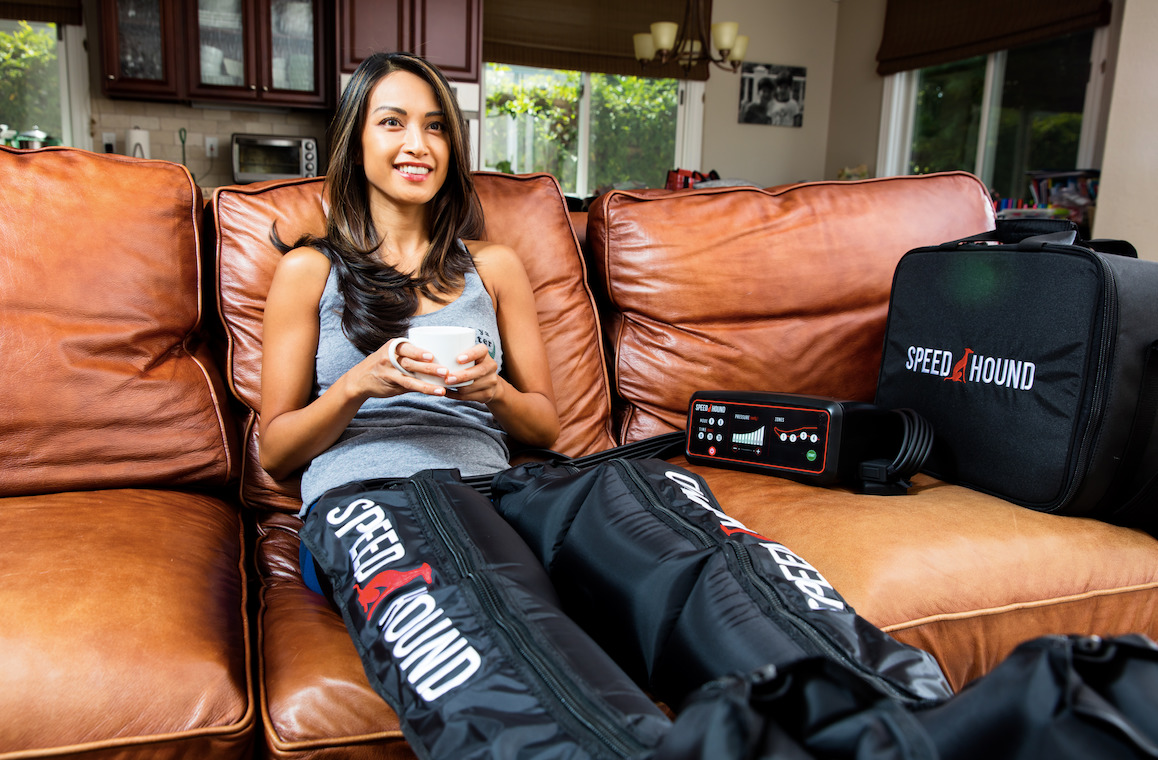The Benefits of Adding Dynamic Compression to Your Recovery Routine
If you are triathlete, you may want to consider adding dynamic compression to your recovery routine.

Approximately 377,939 exercise-related injuries occurred in the United States in 2020. Many of those Injuries are the result of overuse and by association, improper recovery.
Proper recovery is a regularly discussed topic among endurance athletes. But aside from eating well and sleeping, what can you actually do?
While there are many techniques, one tactic growing in popularity and access is incorporating dynamic compression via a compression recovery system. Dynamic compression recovery has been proven to help prevent injuries and promote faster muscle recovery.
In this article, we discuss dynamic compression, how it can it aid in recovery and where to find it (discount codes below).
What is Dynamic Compression?
The short answer is that dynamic compression therapy is a method used to improve performance and reduce muscle recovery time.
Through a specific method of inflation using a pneumatic compression device (i.e., compression boots), these devices, such as The Speed Hound Pro Recovery System, provide manual compression to specific body parts, similar to the effects of massage therapy.
How Does It Work?
These recovery systems are designed to be used in a stationary position, with the athlete sitting or laying down. Boots or sleeves are fitted to the desired area. As the device inflates, it molds to the body for a snug, but comfortable fit.
Compression Intensity: Each athlete is unique so it’s important that your system has the ability to customize the level of pressure and intensity to suit your preferences. Once selected, that pressure intensity is used throughout the recovery sequence.
Compression Sequence: Instead of inflating and remaining stable like a balloon, the compression occurs in a sequence, in most instances, starting from the end of the limb such as the foot or the hand, and working its way toward the hip or shoulder. The pressure also pulses then holds before releasing. This motion mimics the motion of a wave, which helps move fluid away from the limb.
What Does Dynamic Compression do for Me?
Dynamic compression is used by a variety of athletes from age groupers to Olympians. Anyone that is looking to reduce their recovery time between training sessions can benefit.
- Increase blood flow: When blood pool (particularly in lower extremities due to gravity) we can experience soreness and slow muscle recovery. When compression is used, it pushes this fluid away and back towards the heart. It swiftly increases circulation and supplies those recovering muscles with the fresh, oxygenated blood they need.
- Reduce inflammation and swelling: As dynamic compression pulls fluid away from sore and swelling limbs, it helps flush lactic acid and metabolic waste. Ultimately this leaves less toxins in your muscles which promotes healing and reduces inflammation.
- Relieve tight muscles: The wave-like massage therapy created by dynamic compression systems also help reduce muscle tightness. Pulsing compression based pressure helps to manipulate muscles, increase blood flow and loosen them up and increase flexibility.
- Aid muscle recovery: During a strenuous fitness routine, your muscles get little oxygen due to blood and toxins settling in them. This lack of oxygen flow to your muscles can result in cramping and fatigue during recovery.
- Minimize delayed onset soreness: Delayed soreness can occur up to 48 hours after a fitness routine. By increasing blood flow, removing waste building and minimizing inflammation, you can prevent some of this soreness from occurring.
Dynamic Compression in Your Exercise Routine
Most athletes use these systems in two ways, to warm up before a workout or to cool down and recover afterwards. Some even use them before and after their routine.
Compression warm-up: Using dynamic compression devices during your warm-up can help get your workout off on the right foot. It helps get your blood flowing to your muscles as well as getting them loose for your activities. Slipping on the boots for a quick 10-15 minute sequence can make a large difference in workout performance.
Compression cool-down: The most commonly used method of treatment. This should be done as close to the end of your workout as possible and typically lasts 15 to 30 minutes. It’s a great way to wind down and get your muscles the care they need for optimal performance.
What You Should Look for in a Recovery System:
- Correct sizing: make sure the system you choose comes in sizes that will fit you properly. There’s no one size fits all here. Proper width is extremely important in order to achieve the correct compression.
- Adjustable settings: the device should have multiple settings so you can adjust accordingly. You have to be able to adjust the pressure according to the day, your activity and which muscles need attention.
- Quality material: the entire system should be comfortable and built to last. The fabric of the boots that house the system should be easy to clean.
- Accessible team and customer service: you’re about to purchase a serious piece of equipment so make sure you’re able to easily reach the customer service department with any questions you might have. And, they should be happy to chat with you!
- Warranty/return policy: your recovery system should come with a warranty. Make sure the company you purchase from is confident in their product and willing to back it up with a solid warranty.
At AgeGrouper, we chose to partner with SpeedHound Endurance as they have gone above and beyond to provide a quality product, at an affordable price with excellent service and support.
As part of our partnership, we’ve been able to secure a discount for our readers. Use promo code “AgeGrouper” to receive $50 off a Speed Hound Endurance Pro Recovery System.

